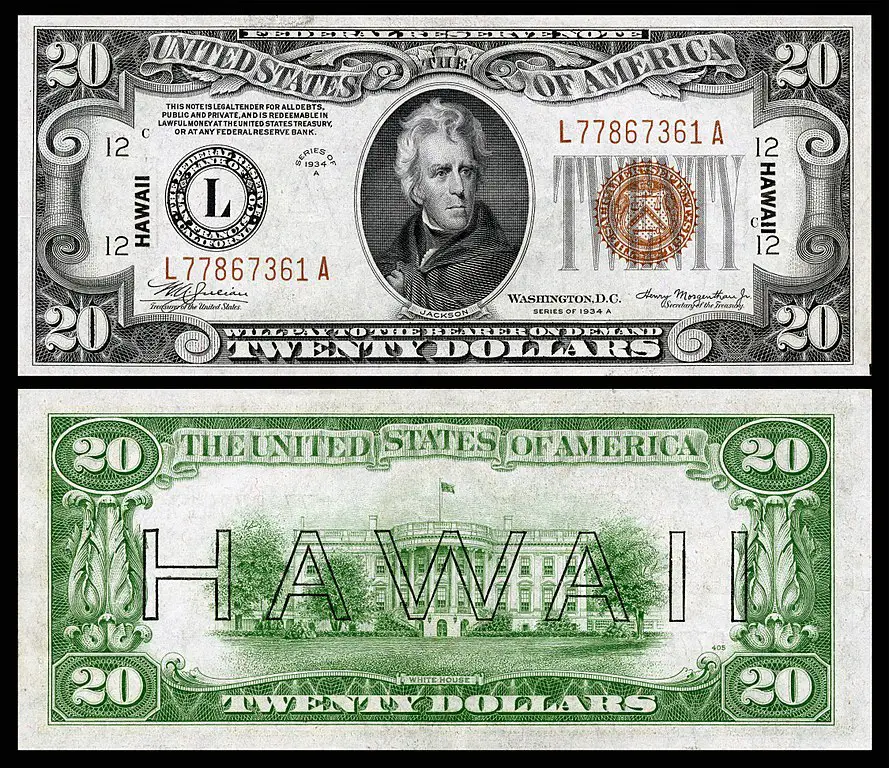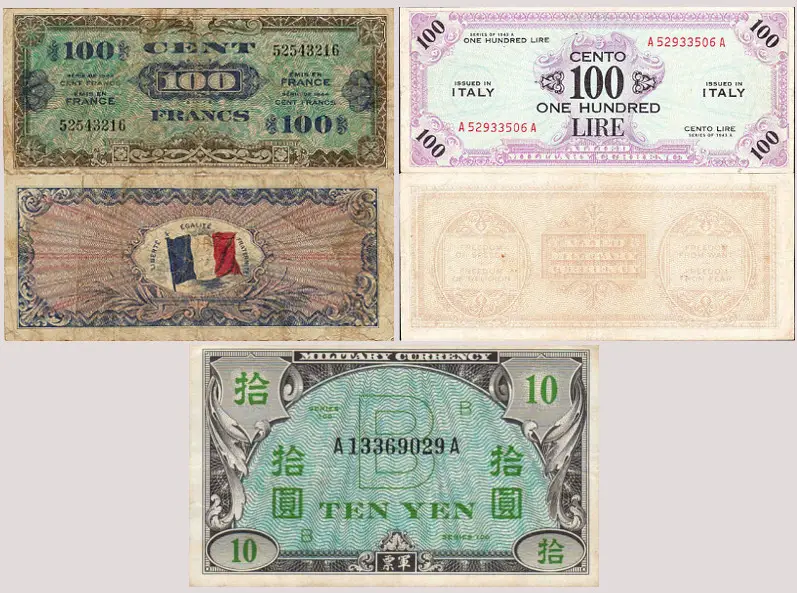After the Japanese attacked Pearl Harbor on December 7, 1941, the United States was forced to consider that an invasion by Japanese forces on the Hawaiian Islands was entirely possible. The government also realized that if the Japanese did invade, they would have the ability to get their hands on a hefty amount of US currency.
In response to these possibilities, the government began recalling all regular US bills throughout the islands a little more than a month after the attack on Pearl Harbor and set limits on how much regular currency businesses and citizens could possess. The plan was to replace the regular currency with a whole new series of banknotes known as Hawaii overprint notes, or what the Bureau of Engraving and Printing called Special Currency. The thinking was that if the Japanese did happen to invade the islands, the currency would be useless.
The new bills were finally issued on June 25, 1942, by the Federal Reserve Bank of San Francisco in denominations of $1, $5, $10, and $20. The treasury seal and the serial numbers were colored brown along with two vertical overprints that said “Hawaii,” and on the back of the bill was a large outline printing of the word “Hawaii.” These changes made the bills easily identifiable.
The military ordered all residents of Hawaii to turn in their regular US currency in exchange for the special Hawaii stamped banknotes by mid-July 1942.
The emergency currency continued to be issued until October 21, 1944. It wasn’t until April 1946 when the notes were finally recalled. The government then had a new problem. They had a $200 million supply of recalled US currency that had to be destroyed. It was too difficult to transport it all back to the mainland, so officials decided to cremate the stockpile. The amount involved was too large and took too long for the one crematorium being used to destroy the notes, so officials employed the help of the larger furnaces of the Aiea sugar mill to speed up the process.
The US issued other types of Special Currency during World War II where there was a threat of invasion or in areas that were going to be invaded by US forces. One type was called Yellow Seal Dollars, and they were used in North Africa between 1942 until 1944. These banknotes had the Treasury seals overprinted in yellow. These banknotes were also used in the 1943 Allied invasion of Sicily.
Another type of Special Currency was used in the Philippines in late 1944 called Philippine Treasury Certificates. These particular notes had the word “Victory” overprinted on the front and back of the note to distinguish them from regular currency. They were used until 1949.
The Bureau of Engraving and Printing also issued Allied Military Currency (AMC) to Allied forces. These were issued in the monetary unit of the country where the military action was taking place or planned to take place.
Supplemental French Francs were used in 1944 before the liberation of France, and Committee French Francs were used after the liberation in 1945. During the Allied occupation of Germany beginning in 1944, Allied Military Marks were used and stayed until 1948, while in Austria, Allied Military Schillings were used between 1945 and 1947.
On the Pacific side, two different types of Military Yen were used. Type “A” Military Yen was used for one year after Korea was liberated in 1945, and the Type “B” Military Yen was used when the Allies began the occupation of Japan, also in 1945. This particular currency continued to be used until 1958.
Sources: US Bureau of Engraving and Printing (1), US Bureau of Engraving and Printing (2)




